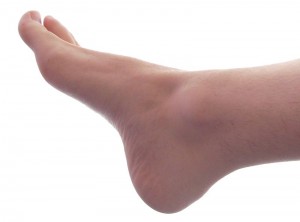By Jaye Sadler, Physical Therapist –


What is Flatfoot?
Flatfoot or pes planus occurs when the arch on the underside of the foot is absent or abnormally low. Although flatfoot is common and usually painless in babies and young children, it can cause cramps and pain in the arch or heel in older children and teenagers. Pain or cramping may also occur in the knee and leg. Flatfoot can affect one or both feet. Children with flat feet may walk awkwardly and may have difficulty finding comfortable shoes to wear.
Flexible flatfoot occurs when the foot remains supple and the Achilles tendon isn’t tight. Although the arch looks flat when your child stands normally, an arch is visible when your child stands on her toes. The American Academy of Orthopaedic Surgeons reports that a flexible flatfoot has normal muscle function and good joint mobility, and is considered to be a variation of normal. If your child has rigid flatfoot, the arch remains flat despite changing the position of the foot. Children who have a flat foot with tight heel cord can’t bend the foot at the ankle more than 15 degrees.
Failure of the arch of the foot to develop fully can cause flat feet in your teenager. Although not a serious medical condition, flatfoot can cause pain and may make activities that involve long periods of standing uncomfortable. Using special shoe inserts to support the foot may be all that is needed to relieve symptoms, although in rare cases, your doctor may recommend surgery.
Treatment Options
If your teenager’s flat feet don’t cause any problems or pain, wearing heel cups or orthotic shoe inserts may be helpful in supporting the foot and reducing pain and cramping as well as wearing well-fitting shoes with good arch support. Wearing shoes or sandals (especially flip flops!) that lack adequate arch support may increase pain.
If prolonged walking or standing or participation in certain activities causes pain, your doctor may suggest that your child temporarily decrease his activities, according to the American College of Foot and Ankle Surgeons. Taking over-the-counter anti-inflammatory pain medication or performing stretching exercises may help relieve pain. Children who have rigid flatfoot or flatfoot with a tight heel cord may require surgery to relieve pain and improve the functioning of the foot.
A Physical Therapist here at Progressive Physical Therapy can assist you and your child in proper stretching and strengthening activities, footwear selection and sports specific reccomendations, as well as orthotics assessment.
To learn more or to schedule an appointment, please call Progressive Physical Therapy at 941-743-8700 or visit us online at www.progressivehealthplex.com.
 Southwest Florida's Health and Wellness Magazine Health and Wellness Articles
Southwest Florida's Health and Wellness Magazine Health and Wellness Articles

